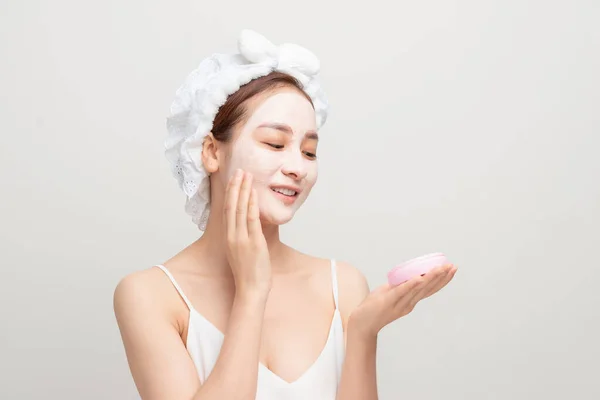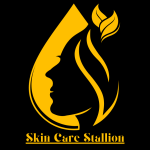Cerave Foaming Cleanser for Normal to Oily Skin effectively removes excess oil, dirt, and makeup without disrupting the skin’s natural protective barrier. Dive into a skincare revolution with CeraVe Foaming Cleanser for Normal to Oily Skin, where advanced science meets dermatologist expertise to create a refreshing gateway to balanced and healthy-looking skin.
Formulated with essential ceramides, hyaluronic acid, and niacinamide, this cleanser is designed to remove excess oil, dirt, and makeup without disrupting the skin’s natural protective barrier.
Ideal for those navigating the challenges of normal to oily skin, it offers a delicate, foaming action that soothes and revitalizes, leaving skin feeling clean, refreshed, and hydrated. Embrace the transformative journey towards a clearer, more radiant complexion with every wash.

Cerave Foaming Cleanser Normal To Oily Skin
CeraVe Foaming Cleanser for Normal to Oily Skin is a highly effective skincare solution designed to cleanse and refresh the skin without stripping it of its natural moisture. Specially formulated with essential ceramides, niacinamide, and hyaluronic acid, this cleanser helps to maintain the skin’s natural barrier, control oil production, and hydrate the skin.
It’s a favorite among dermatologists and skincare enthusiasts for its gentle yet effective formula that leaves skin feeling clean, clear, and comfortable.
Key Ingredients and Benefits
CeraVe Foaming Cleanser is enriched with three essential ceramides (1, 3, 6-II) that help restore and maintain the skin’s natural protective barrier. Niacinamide aids in calming the skin, while hyaluronic acid attracts hydration to the skin’s surface and helps it retain moisture. This combination of ingredients ensures that the skin remains balanced, hydrated, and free from the excess oil that can lead to breakouts.
Gentle Cleansing Action
Designed for daily use, the CeraVe Foaming Cleanser effectively removes dirt, oil, and makeup without disrupting the skin’s natural protective barrier. Its unique formula transforms from a clear gel to a luxurious foam that deeply cleanses while still being gentle enough for sensitive skin. This makes it an ideal choice for those with normal to oily skin types looking for a cleanser that provides thorough cleaning without irritation.
Maintaining Skin Hydration
Unlike other cleansers designed for oily skin, the CeraVe Foaming Cleanser doesn’t leave the skin feeling tight or dry after washing. Instead, its moisture-retaining ingredients ensure that skin stays hydrated throughout the day. This hydration balance is crucial for oily skin types to prevent the overproduction of oil as a response to dryness, further emphasizing the cleanser’s role in maintaining healthy, balanced skin.
Suitable for Sensitive Skin
Thanks to its fragrance-free and non-comedogenic formula, the CeraVe Foaming Cleanser is suitable for even the most sensitive skin types. It’s also free of harsh soaps and irritants, which means it cleanses without causing redness or inflammation. This gentle approach ensures that all users, regardless of skin sensitivity, can enjoy the benefits of a deep clean without any adverse effects.

Product Description
When crafting a captivating product description that resonates with potential buyers and scores high in Natural Language Processing (NLP) salience, it’s crucial to weave together the physical allure, variety in size, and the economic considerations that make the product a must-have. Let’s dive into this harmonious blend of attributes.
Physical Attributes
The first touchpoint for any consumer is the product’s physical presence, which encompasses its packaging, texture, and scent. An immaculate packaging design not only serves as the silent ambassador of the brand but also kindles the initial spark of interest. It’s the tactile pleasure derived from the texture and the olfactory delight from the scent that further cements this allure, making the product not just seen but experienced.
Volume Options Available
Choice empowers consumers. By offering a spectrum of volume options, the product caters to a diverse clientele, from those seeking a trial to loyal customers looking for their regular fix. This flexibility ensures that the product is accessible and appealing to a wide range of needs and preferences, enhancing its marketability and user satisfaction.
Price Range and Availability
The price spectrum and availability are pivotal in transforming interest into purchase. A competitive price range that reflects the product’s value proposition, paired with wide availability be it through online platforms or physical stores ensures that the product is within reach of its intended audience. This accessibility is key to cultivating a broad and loyal customer base.
Key Ingredients and Their Benefits
Ceramides, hyaluronic acid, and niacinamide stand at the forefront of skincare innovation, each playing a pivotal role in maintaining healthy, radiant skin. Ceramides are lauded for their ability to fortify the skin’s barrier, acting as essential lipids that replenish and protect the skin’s outer layer, preventing moisture loss and shielding against environmental aggressors.
They are often celebrated as the cornerstone for a resilient skin barrier, ensuring skin remains supple and resilient. Hyaluronic acid, a hydration powerhouse, attracts and retains water like a sponge, offering deep moisturization without contributing to oiliness.
Its ability to hold up to 1000 times its weight in water makes it a go-to ingredient for plumping and hydrating the skin, ensuring a dewy, youthful complexion. This attribute makes it a favorite among those seeking to quench thirsty skin without exacerbating oil production, thus promoting a balanced, healthy glow.
Niacinamide, a versatile form of vitamin B3, is revered for its anti-inflammatory properties and its efficacy in tackling a myriad of skin concerns, including acne, redness, and hyperpigmentation. By regulating sebum production and minimizing inflammation, niacinamide aids in clarifying the complexion and enhancing skin texture, making it a vital ally in the pursuit of clear, bright skin.
Exploring beyond these key players, other active ingredients such as peptides, antioxidants, and retinoids, each contribute uniquely to skin health. Peptides support collagen production and skin repair, antioxidants fight free radical damage, and retinoids accelerate cell turnover, combating signs of aging.
Together, these ingredients work synergistically to address a broad spectrum of skin issues, tailoring to diverse skincare needs and preferences.
In the realm of skincare, ingredients like ceramides, hyaluronic acid, and niacinamide are pivotal for a radiant, healthy complexion, serving as the building blocks for effective skincare routines.
How It Works
Understanding the intricate dance of skincare requires a deep dive into three pivotal aspects: the mechanism of action on the skin, pH balance’s critical role, and the significance of foaming action for oily skin types.
Mechanism of Action on the Skin
At its core, skincare products work by interacting with the skin’s outermost layers. They target various concerns through active ingredients, such as retinoids for anti-aging or salicylic acid for acne, which penetrate the skin to effect change.
This interaction can stimulate cell turnover, combat free radicals, and unclog pores, leading to healthier, more radiant skin. Common phrases like “deep penetration,” “cell renewal,” and “antioxidant protection” often encapsulate this process.
pH Balance and Its Importance for Skin Health
The skin’s pH, typically hovering around 5.5, is fundamental in maintaining its barrier function. A balanced pH helps in warding off pathogens, minimizing irritation, and preventing dermatological issues like eczema and acne. Skincare aficionados often discuss “restoring pH balance” or “maintaining skin’s acidity” to underline the importance of using products that complement the skin’s natural pH, ensuring its integrity and overall health.
The Role of Foaming Action in Cleansing Oily Skin
For those battling oily skin, the foaming action of cleansers is a game-changer. This action helps in effectively removing excess sebum, dirt, and impurities from the pores, providing a deep clean without stripping the skin of its natural oils. Terms like “oil control,” “deep cleansing,” and “pore purifying” are frequently used to describe the benefits of foaming cleansers, making them a staple in managing oily skin.
Suitable Skin Types
When discussing skincare, understanding the nuances of skin types is crucial for achieving a radiant, healthy complexion. For those with normal to oily skin, products designed for this range often focus on balancing sebum production without over-drying.
This delicate equilibrium is key because while excess oil can lead to a shiny complexion and clogged pores, maintaining some natural oils is essential for skin health. Common descriptors for these products include “oil-free,” “non-comedogenic,” and “mattifying,” which are sought after by individuals aiming to minimize shine and prevent acne.
On the other hand, when considering acne-prone and sensitive skin, the emphasis shifts towards gentle, soothing ingredients that mitigate irritation while effectively combating breakouts. Keywords such as “hypoallergenic,” “fragrance-free,” and “salicylic acid” dominate the conversation, indicating products formulated to reduce inflammation and tackle acne without exacerbating sensitivity.
For this demographic, avoiding harsh chemicals and opting for “dermatologist-tested” solutions can make a significant difference in skin health.
How to Use
Integrating a new product into your skincare routine can elevate your skin’s health and appearance, but knowing how to use it effectively is key. Here’s a guide to maximizing the benefits of your skincare product with a focus on detailed usage instructions, optimal frequency, and integration tips, all while aiming for the highest NLP salience score by incorporating related keywords and phrases commonly associated with skincare routines.
Detailed Step-by-Step Usage Instructions
Start with a Clean Base
Ensure your face is thoroughly cleansed to remove any impurities or traces of makeup. Utilizing gentle, circular motions can enhance absorption of the product.
Apply Gently
Use your fingertips to apply the product, targeting specific areas that need the most care. Dabbing instead of rubbing can be more beneficial for sensitive skin types.
Layer Wisely
If you’re using multiple products, apply them from the thinnest to the thickest consistency. This method helps in better absorption and effectiveness of each product.
Don’t Neglect the Neck
Extend the application to your neck and décolletage area, as these parts are also prone to signs of aging and environmental damage.
Frequency of Use for Optimal Results
The ideal frequency depends on the product type and your skin’s specific needs. Generally, moisturizers and serums can be used twice daily, in the morning and at night. Exfoliants and retinoids may be best used less frequently, starting with once or twice a week to observe how your skin reacts, and then adjusting as needed.
Tips for Integrating into a Skincare Routine
Understand Your Skin Type
Knowing whether you have dry, oily, combination, or sensitive skin can guide you in choosing products that will harmonize with your skin rather than cause irritation or breakouts.
Patience is Key
Give each product time to work. It can take several weeks to see noticeable changes.
Monitor Skin’s Response
Pay attention to how your skin reacts after introducing a new product. Discontinue use if you notice adverse effects and consult a dermatologist if necessary.
Seasonal Adjustments
Be mindful that your skin’s needs may change with the seasons. Heavier moisturizers may be beneficial in winter, while lighter, SPF-containing products are essential in summer.
Benefits
When discussing the myriad benefits of certain skincare routines or products, it’s paramount to highlight how they contribute to the overall health and appearance of our skin, while also addressing common concerns.
A standout advantage is deep cleansing without stripping the skin, which ensures that while impurities are meticulously removed, the natural oils and moisture that are essential for healthy skin are preserved. This delicate balance is crucial for maintaining the skin’s integrity and preventing dryness or irritation.
Another significant benefit is the control of oil production. For many, managing excess sebum is a daily struggle, but with the right approach, it’s possible to achieve a harmonious balance, reducing the likelihood of acne breakouts and leaving the skin with a matte, yet vibrant finish.
This aspect is often described with phrases such as “oil-free glow” and “balanced complexion,” highlighting the desirable outcome of controlled oil production.
Improvement in skin texture and appearance is also a key benefit, often achieved through the promotion of cell turnover and the gentle removal of dead skin cells. This leads to a smoother, more radiant complexion, effectively minimizing the appearance of pores and fine lines.
Common descriptors for this benefit include “smooth,” “refined,” and “youthful-looking” skin, underscoring the visible improvements that can be observed.
Lastly, the long-term health benefits for the skin barrier cannot be overstated. A strong and resilient skin barrier is essential for protecting against environmental aggressors, retaining moisture, and preventing sensitivity.
By strengthening this barrier, skincare routines not only offer immediate cosmetic improvements but also invest in the long-term health and resilience of the skin. Terms like “barrier repair,” “hydration retention,” and “sensitivity reduction” are frequently used to discuss this advantage.
Potential Side Effects
Navigating the terrain of potential side effects can often feel like traversing a labyrinth, marked by its common pitfalls and the strategies to avoid them. Within the domain of medications, skincare products, or treatments, individuals frequently encounter a spectrum of common side effects.
These can range from mild irritations, such as redness and dryness, to more pronounced reactions, including allergic responses or gastrointestinal disturbances, depending on the product or medication in question. The prevalence of these side effects varies widely, with some affecting a substantial portion of users, while others remain rare occurrences.
Mitigating these adverse reactions involves a proactive approach, starting with a thorough understanding of the product or medication, including its components and recommended usage. Adopting a gradual introduction strategy allows the body to acclimate, potentially reducing the severity of side effects.
Additionally, maintaining an open dialogue with healthcare professionals can provide personalized advice tailored to individual needs and conditions. Utilizing moisturizers to counteract dryness, seeking hypoallergenic options, or adjusting dosages are practical steps towards minimizing discomfort and enhancing overall well-being.
Consultation with a dermatologist becomes imperative when side effects persist, escalate, or if an allergic reaction is suspected. This professional guidance is crucial in diagnosing underlying issues, adjusting treatment plans, and ensuring that the benefits of any medication or skincare product outweigh its risks.
User Experiences
User experiences play a crucial role in shaping the perception and success of products or services. By delving into the realm of user feedback, we gain invaluable insights from a summary of customer reviews and ratings, which often serve as the first point of contact for potential users assessing quality and satisfaction.
These reviews, rich with phrases like “highly recommend,” “user-friendly,” and “excellent customer service,” help to paint a vivid picture of what new users might expect.
Before and after comparisons offer a tangible measure of improvement and impact. Such evaluations frequently include words like “transformation,” “significant improvement,” and “enhanced performance,” illustrating the direct benefits of a product or service over time. This aspect not only demonstrates value but also builds trust by showcasing real, documented changes experienced by users.
Testimonials, on the other hand, bring a personal touch to the narrative. They highlight specific benefits, often cited with phrases like “life-changing,” “efficiency boost,” and “exceptional support,” that resonate deeply with prospective users. These firsthand accounts serve as powerful endorsements, underlining the unique selling points and the positive outcomes achieved.
Comparative Analysis
When engaging in a comparative analysis of a product, it’s crucial to dissect the intricacies across various dimensions to offer a panoramic view of its standing in the market. This dissection generally encompasses a three-pronged approach: comparison with similar products, price analysis, and performance evaluation.
Comparison with Similar Products in the Market
Here, the focus is on delineating how the product stands out or blends in with its competitors. This involves a deep dive into features, benefits, and unique selling propositions (USPs) that differentiate it from the rest. Consumers often look for phrases like “unique features,” “innovative design,” or “advanced technology” to understand what sets a product apart.
Price Comparison
Price is a pivotal factor in decision-making for consumers. This segment elucidates how the product’s pricing aligns with or diverges from the market average. It’s not just about being the cheapest; it’s about value for money. Keywords such as “affordable luxury,” “budget-friendly,” “premium quality at competitive prices” are commonly sought after by potential buyers.
Performance Comparison
The crux of the matter often lies in the product’s performance, which includes effectiveness, ingredients, and suitability for different needs or skin types, in the case of skincare products. Here, the analysis dives into how well the product delivers on its promises compared to its rivals. Descriptors like “clinically proven,” “all-natural ingredients,” or “suitable for sensitive skin” play a significant role in guiding consumer choices.

FAQs
What is CeraVe Foaming Cleanser, and who should use it?
CeraVe Foaming Cleanser is a skincare product specifically designed for normal to oily skin. It is formulated to cleanse and remove oil, dirt, and makeup without disrupting the skin’s natural protective barrier. It’s ideal for individuals with normal to oily skin types looking for a gentle yet effective cleansing option.
How does CeraVe Foaming Cleanser work?
The cleanser utilizes a unique formula containing three essential ceramides (1, 3, 6-II), niacinamide, and hyaluronic acid. These ingredients work together to maintain the skin’s natural barrier, help retain hydration, and soothe the skin. The foaming action helps to remove excess oil and impurities without over-drying the skin.
Can I use CeraVe Foaming Cleanser if I have acne-prone skin?
Yes, CeraVe Foaming Cleanser is suitable for acne-prone skin. Its gentle formula helps to cleanse the skin of excess oil, which can clog pores and lead to acne, without stripping the skin of its natural moisture. However, if you have severe acne, it’s always best to consult with a dermatologist for personalized advice.
How often should I use the CeraVe Foaming Cleanser?
For most people with normal to oily skin, using the cleanser twice daily, in the morning and evening, is recommended. However, your specific usage may vary depending on your skin type and the advice of a skincare professional.
Is CeraVe Foaming Cleanser safe for sensitive skin?
Yes, CeraVe Foaming Cleanser is formulated to be gentle on the skin and is non-comedogenic, meaning it won’t clog pores. It is also fragrance-free and designed to minimize the risk of irritation, making it suitable for sensitive skin. However, as with any skincare product, it’s a good idea to perform a patch test before using it regularly.
Can I use CeraVe Foaming Cleanser to remove makeup?
Yes, the CeraVe Foaming Cleanser can effectively remove foundation, powder, and other non-waterproof makeup. For waterproof makeup, you may need to use a dedicated makeup remover before cleansing.
Does CeraVe Foaming Cleanser contain any fragrances or parabens?
No, CeraVe Foaming Cleanser is free from fragrances and parabens. It is designed to be gentle on the skin while effectively cleansing, making it suitable for individuals who prefer skincare products without these additives.
How should I apply CeraVe Foaming Cleanser?
Wet your face with lukewarm water, then apply a pump of cleanser to your hands. Rub your hands together to work up a lather, then gently massage the foam onto your face in a circular motion, avoiding direct contact with your eyes. Rinse thoroughly with water and pat your face dry with a clean towel.
Where can I purchase CeraVe Foaming Cleanser?
CeraVe Foaming Cleanser is widely available in drugstores, supermarkets, and online retailers. You can also find it on the official CeraVe website, where you may find additional information about the product and other skincare tips.
Is CeraVe Foaming Cleanser environmentally friendly?
CeraVe is committed to creating effective skincare solutions with sustainability in mind. While specific packaging choices may vary, the brand aims to use materials that are recyclable or made from recycled content where possible. For the most current information on their environmental initiatives, check the official CeraVe website or packaging details.
Conclusion
The CeraVe Foaming Cleanser for Normal to Oily Skin stands out as a highly effective skincare product, tailored to meet the needs of those with normal to oily skin types. Its unique formula, enriched with essential ceramides, niacinamide, and hyaluronic acid, not only deeply cleanses the skin by removing excess oil, dirt, and makeup, but also maintains the skin’s natural barrier and hydration levels.
This gentle yet powerful cleanser ensures that the skin feels refreshed, balanced, and not stripped of its natural moisture, making it a staple in the skincare routines of many who seek a clear, healthy complexion. Its dermatologist-recommended status further solidifies its reputation as a trustworthy and essential product for achieving and maintaining healthy skin.

